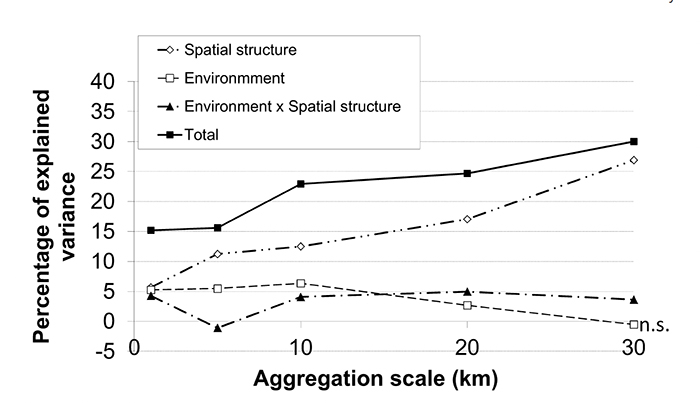DISENTANGLING THE DRIVERS OF METACOMMUNITY STRUCTURE ACROSS SPATIAL SCALES.
Meynard C.M., Lavergne S., Boulangeat I., Garraud L., Van Es J., Mouquet N. and Thuiller W. (2013).
Journal of Biogeography, 40, 1560-1571, doi:10.1111/jbi.12116
Key message : Here we used two complementary statistical tools to test: (1) whether or not the patterns of community structure and environmental influences are consistent across resolutions; and (2) whether and how the joint use of two fundamentally different statistical approaches provides a complementary interpretation of results. We found that major environmental drivers of richness included growing degree days, temperature, moisture and spatial or temporal heterogeneity. Variance partitioning pointed to an increase in the role of dispersal at coarser resolutions, while metacommunity structure analysis pointed to environmental filtering having an important role at all resolutions through a Clementsian assembly process (i.e. groups of species having similar range boundaries and co-occurring in similar environments). The combination of methods used here allows a better understanding of the forces structuring ecological communities than either one of them used separately. A key aspect in this complementarity is that variance partitioning can detect effects of dispersal whereas metacommunity structure analysis cannot. Moreover, the latter can distinguish between different forms of environmental filtering (e.g. individualistic versus group species responses to environmental gradients).
